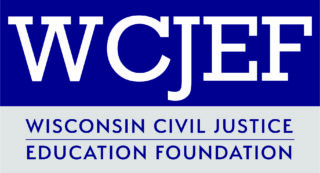“Poor Cleaveland is in deep affliction.”
Lavinia Goodell, December 22, 1869
In her 1879 will, Lavinia Goodell named her uncle, Josiah Cleaveland Cady as trustee.

Cleaveland, (sometimes spelled Cleveland) as he was called, was born in 1837, the son of Lavinia’s mother’s father, Deacon Josiah Cady, and his second wife, Lydia. Cleaveland was more than thirty years Clarissa Goodell’s junior and was only two years older than Lavinia. The Cadys lived in Providence, Rhode Island, but there was always concern about disease in cities, so after the birth Lydia and the baby spent some time in the country. They returned to Providence when Cleaveland was seven months old. Josiah reported, “We are as well now as we have been perhaps for a year past but we have no promise of tomorrow.”
Cleaveland graduated from Trinity College in Hartford, Connecticut and began working as an architect in New York City. In 1863 he married Julia Bulkley. Lavinia’s sister, who was living in upstate New York, inquired about the new Mrs. Cady. Lavinia replied:
You wish to know the personal appearance of Cleveland’s bride. She is about my size and form, and about as thin as I, with black eyes, a fine head of long, black hair, which was elaborately braided on the occasion, intelligent and interesting countenance; in manners graceful, affable, and sprightly.
And the following year, Lavinia reported, “Have been over to call on Cleveland’s wife. I like her very much. She is lady-like and refined, pleasant, affable and unaffected. Not handsome; looks like me, only with black eyes. “
In June 1869, Cleaveland wrote to William Goodell asking his advice on bible study topics. In the course of the letter he reported:
Finally, the Lord has blessed us with a little one, who of course has brought new care. I may as well say here that Little Alice Cady is about two months old. A very healthy, sturdy little woman, as plump and rosy as well can be, and her mother has got along remarkable well. The physician (her father) says as well as any patient he ever had; she now attends to her duties as usual, with an additional one, nursing her little daughter.
I feel very deeply the Lord’s goodness in the matter of my dear wife’s safety, healthful recovery, and in the gift of the little one sound in body & health.

Sadly, in December 1869, Cleaveland’s wife died suddenly from inflammation of the lungs. Lavinia wrote to her parents:
She was quite well when I saw him scarcely two weeks ago. I think I wrote you last Sunday that I had received a note from him, saying that she was very sick. Still I did not realize that she was in so critical a situation. I feel it the more, having seen him so recently…. Poor Cleveland will feel the loss very deeply for he thought everything of her. The babe is only ten months old.
Lavinia clearly respected Cleaveland since she chose him as trustee of her estate. When she visited New York City in the summer of 1878 while recuperating from cancer surgery, Lavinia reported that Cleaveland took her on a carriage ride through Central Park.
In 1881, the year after Lavinia’s death, Cleaveland married his late wife’s sister, Emma, and they had four more children. In the meantime, Cleaveland’s architectural career was flourishing. His design was chosen for the original Metropolitan Opera House, which opened in 1883, a fact mentioned in Anderson Cooper’s book, Vanderbilt: the Rise and Fall of an American Dynasty.

His many other designs include an entrance and auditorium for the American Museum of Natural History, Bellevue Medical School, fifteen buildings at Yale University, and multiple buildings at Berea College in Berea, Kentucky, where his grand nephew, William Goodell Frost, was the college president.
Cleaveland died in 1919, at age 82. The New York Times reported that the previous year Cleaveland had presented to the library of Trinity College his collection of books and photographs relating to architecture. The collection comprised 375 volumes and more than 2,000 photographs, and was considered one of the most complete of its kind in the country.
Sources consulted: Josiah Cady’s letter to William and Clarissa Goodell (August 31, 1837); Lavinia Goodell’s letter to William and Clarissa Goodell (December 22, 1869); Lavinia Goodell’s letters to Maria Frost (July 1, 1863; January 11, 1864; June 19, 1878); J. Cleaveland Cady’s letter to William Goodell (June 10, 1869); New York Times (April 18, 1919); Anderson Cooper & Katherine Howe, Vanderbilt: The Rise and Fall of an American Dynasty (Harper 2021), page 81.







